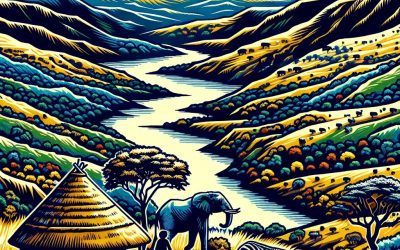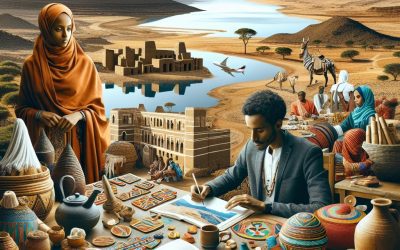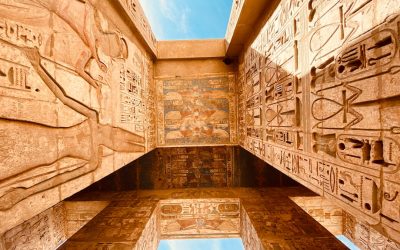Explore the World Through Geography, Natural Resources & Daily History
Clear, reliable and engaging guides that help you understand our planet — from UK geography education to global natural resources and On This Day history events.
Explore, discover, and learn about the wonders of our world! At Earth Site, we’re passionate about bringing geography, history, and science to life for curious minds of all ages. Whether you’re delving into historical events, uncovering the mysteries of the natural world, or seeking interactive resources, you’re in the right place.
Here, you can uncover the stories behind historical events, explore the natural wonders of our planet, and gain valuable insights into how the Earth’s systems shape our daily lives. From the towering peaks of mountain ranges to the far-reaching impacts of human innovation, we aim to make every topic both engaging and informative.
Start your journey of discovery with us today, and let’s make learning an adventure!
What We Cover
Earth Site brings together engaging and accessible educational content designed to help you understand the world, its history, and its natural systems.
🌍 Geography Education (UK & Worldwide)
We publish clear, easy-to-understand geography resources for students, teachers and curious learners. Our guides support geography education in the UK and cover physical geography, climate, ecosystems, population, and global development.
⛏️ Natural Resources & Environmental Geography
Explore detailed country profiles covering natural resources, mining, energy, geology and global environmental challenges. We show how nations manage minerals, water, land and ecosystems, and why these resources matter.
📅 On This Day in History
Every day has a story. Our On This Day history series features major events, anniversaries, traditions, and cultural milestones from around the world — with timelines, context, and fun facts.
TIMELINE
Exploring the Kingdom of Eswatini: A Journey Through the Heart of Southern Africa
The Kingdom of Eswatini, formerly known as Swaziland, is a small landlocked country located in Southern Africa. It is bordered by South Africa to the west and Mozambique to the east. Despite its size, Eswatini is a country rich in history, culture, and natural beauty, making it a must-visit destination for travelers. Eswatini has a fascinating history that dates back thousands of years. The country was ruled by various clans and chiefs before it became a British protectorate in the late 19th century. In 1968, Eswatini gained independence from British rule and became a monarchy. Today, it is one of the few remaining absolute monarchies in the world. The culture of Eswatini is deeply rooted in tradition and customs. The Swazi people, who make up the majority of the population, have a rich cultural heritage that is celebrated through music, dance, and attire. Traditional dances such as the Sibhaca and Umhlanga are performed at festivals and special occasions, showcasing the vibrant spirit of the Swazi people. Summary Eswatini is a small, landlocked kingdom in southern Africa. The country has a rich cultural heritage, with traditional dances, music, and crafts. Eswatini is home to stunning natural wonders, including mountains, waterfalls, and wildlife reserves. Visitors can see a variety of animals in Eswatini’s national parks, including elephants, lions, and rhinos. The country has many traditional festivals and celebrations throughout the year, showcasing its unique culture and history. The Rich Cultural Heritage of Eswatini One of the highlights of visiting Eswatini is experiencing its rich cultural heritage. Traditional dances and music play a significant role in Swazi culture, and visitors have the...
Unlocking the Power of Eigenvalues and Eigenvectors: Understanding Their Importance in Linear Algebra
Eigenvalues and eigenvectors are fundamental concepts in linear algebra that have applications in various fields such as physics, engineering, and computer science. In simple terms, eigenvalues and eigenvectors are properties of a matrix that describe how it behaves when multiplied by a vector. An eigenvalue is a scalar that represents the scaling factor of the eigenvector when the matrix is multiplied by it. In other words, an eigenvector is a non-zero vector that remains in the same direction after the matrix transformation, but its length may change. Eigenvalues and eigenvectors play a crucial role in understanding the behavior of linear transformations and systems of linear equations. They provide insights into the structure and properties of matrices, allowing us to simplify complex calculations and solve problems efficiently. Key Takeaways Eigenvalues and eigenvectors are important concepts in linear algebra. Eigenvalues are scalar values that represent how a linear transformation changes the magnitude of a vector. Eigenvectors are non-zero vectors that remain in the same direction after a linear transformation. Eigenvalues and eigenvectors can be calculated using matrix operations. Eigenvalues and eigenvectors have applications in various fields such as principal component analysis, Markov chains, and quantum mechanics. The Concept of Eigenvalues and Eigenvectors Explained To understand eigenvalues and eigenvectors, let’s consider a simple example. Suppose we have a 2×2 matrix A and a vector When we multiply A by v, we get another vector Av. Now, if Av is parallel to v, then v is an eigenvector of A, and the scalar λ is the corresponding eigenvalue. Mathematically, this can be represented as Av = λv, where A is the matrix, v...
Exploring the Charm and Innovation of Estonia: A Journey Through the Land of the Tallinn
Nestled in Northern Europe, Estonia is a small but vibrant country with a population of just over 1.3 million people. Despite its size, Estonia has made a name for itself on the global stage with its unique culture, rich history, and commitment to innovation. Located on the eastern coast of the Baltic Sea, Estonia shares borders with Russia to the east and Latvia to the south. Its capital city, Tallinn, is a medieval gem that attracts visitors from all over the world. Estonia has a fascinating history that dates back thousands of years. It has been influenced by various cultures and empires throughout the centuries, including the Vikings, Germans, Swedes, and Russians. Despite periods of occupation and struggle for independence, Estonia has managed to maintain its cultural identity and traditions. Today, Estonia is known for its forward-thinking approach to technology and sustainability, making it a unique and exciting destination for travellers. Summary Estonia is a small nation with a big heart, known for its rich cultural heritage and natural wonders. Tallinn is a medieval city with modern twists, offering a unique blend of old and new. Estonia’s cultural heritage ranges from folk traditions to contemporary art, showcasing the country’s diverse artistic scene. Estonia’s natural wonders include pristine forests and stunning coastline, making it a perfect destination for nature lovers. Estonia’s tech-savvy revolution has made it a leader in innovation, with a focus on sustainability, wellness, and community. Discovering the allure of Tallinn: A medieval city with modern twists Tallinn, the capital city of Estonia, is a true gem that seamlessly blends medieval charm with modern attractions. The heart...
The Fascinating World of Diprotodontia: Exploring the Unique Traits of Wombats, Kangaroos, Wallabies, and Koalas
Diprotodontia is an order of marsupials that includes some of Australia’s most iconic and unique animals. Marsupials are a distinct group of mammals that give birth to relatively undeveloped young, which then continue to develop and nurse in a pouch. This is in contrast to placental mammals, which give birth to fully developed young. Marsupials have evolved in isolation in Australia for millions of years, resulting in a diverse range of species with unique adaptations. They play a crucial role in Australia’s ecosystem, as they fill ecological niches that are occupied by placental mammals in other parts of the world. For example, kangaroos and wallabies are herbivores that graze on grasses and shrubs, similar to deer or antelope in other parts of the world. Summary Diprotodontia are marsupials with unique traits, including a specialized dental structure and a pouch for carrying their young. Wombats are expert burrowers, with strong legs and sharp claws that allow them to dig complex underground tunnels. Kangaroos are iconic symbols of the Australian outback, with powerful hind legs that enable them to hop at high speeds and cover long distances. Wallabies are agile jumpers that inhabit forest floors, with long tails that help them balance and maneuver through dense vegetation. Koalas are cute tree-dwellers that feed exclusively on eucalyptus leaves, with a specialized digestive system that allows them to break down the toxic compounds in their diet. Wombats: The Burrowing Experts of the Australian Bush Wombats are one of the most distinctive and fascinating members of the Diprotodontia order. They are medium-sized marsupials that are well adapted for life underground. Wombats have a stocky...
Exploring the Enchanting Charm of Eritrea: A Journey Through the Hidden Gem of Africa
Eritrea, a small country located in the Horn of Africa, is often overlooked as a travel destination. However, those who do venture to this hidden gem are rewarded with a truly unique and unforgettable experience. From its rich cultural heritage to its stunning natural beauty, Eritrea has something to offer every type of traveler. Summary Eritrea is Africa’s best kept secret, with a rich cultural heritage and natural beauty. As a melting pot of diversity, Eritrea boasts a thriving arts and crafts scene and delicious cuisine. The magnificent architecture of Asmara is a timeless treasure, while the warm hospitality of the Eritrean people is a genuine welcome. Eritrea’s fascinating history tells a story of resilience and independence, making it a promising destination for sustainable tourism. Adventurous activities in Eritrea make it a playground for explorers, with a future that looks bright for visitors seeking a unique experience. The Rich Cultural Heritage of Eritrea: A Melting Pot of Diversity Eritrea is home to a diverse range of ethnic groups, each with their own unique traditions and languages. The Tigrinya, Tigre, and Afar are just a few of the many ethnic groups that call Eritrea home. This diversity is reflected in the country’s music, dance, and clothing. Traditional Eritrean music is characterized by its rhythmic beats and melodic tunes, often accompanied by traditional instruments such as the krar and the wata. Eritrean dance is vibrant and energetic, with dancers often wearing colorful costumes adorned with intricate beadwork and embroidery. Religion also plays a significant role in Eritrean culture, with Christianity and Islam being the two dominant religions. Churches and mosques...
The Salty Truth About Sodium (Na): Understanding its Impact on Our Health
Sodium is an essential mineral that plays a crucial role in maintaining the balance of fluids in our bodies. It is involved in various bodily functions, including nerve transmission, muscle contraction, and maintaining proper pH levels. Sodium also plays a significant role in regulating blood pressure. However, it is important to maintain a balance of sodium intake, as excessive consumption can have negative effects on our health. Summary Sodium is an important nutrient in our diet, but too much can lead to health problems. High sodium intake is linked to high blood pressure, which increases the risk of cardiovascular disease. The recommended daily allowance of sodium is 2,300mg, but many people consume much more than this. Hidden sources of sodium include processed foods, condiments, and snacks. Reducing sodium intake can improve kidney health, fluid balance, and overall health. Sodium and Blood Pressure: The Link Explained One of the most well-known effects of sodium on our health is its impact on blood pressure. When we consume too much sodium, it can cause an increase in blood volume, leading to higher blood pressure. This is because sodium attracts water, and when there is an excess of sodium in the bloodstream, it causes the body to retain more water. The Dietary Approaches to Stop Hypertension (DASH) diet is a well-known eating plan that has been proven to lower blood pressure. It emphasizes consuming fruits, vegetables, whole grains, lean proteins, and low-fat dairy products while limiting sodium intake. By following the DASH diet and reducing sodium intake, individuals can effectively manage their blood pressure levels and reduce the risk of developing hypertension. The...
Exploring the Power of Vectors: How They Revolutionize Modern Technology
Vectors are a fundamental concept in mathematics and physics that play a crucial role in various fields, including technology, engineering, and science. They are used to represent quantities that have both magnitude and direction, making them essential for understanding and solving complex problems. From navigation systems to computer graphics, vectors are at the heart of many modern technologies. In this article, we will explore the basics of vectors, their applications in different fields, and the future of vector-based technologies. Key Takeaways Vectors are mathematical objects that have both magnitude and direction. Vectors play a crucial role in modern technology, including computer graphics, GPS, robotics, and artificial intelligence. Vector calculus is a powerful tool for solving complex problems in physics and engineering. Vector-based machine learning is a game-changer in artificial intelligence, enabling more accurate predictions and faster processing. The future of vector-based technologies is promising, with trends pointing towards increased use in fields such as healthcare and renewable energy. Understanding the Basics of Vectors: A Comprehensive Guide A vector is a mathematical object that represents a physical quantity with both magnitude and direction. It can be represented by an arrow, where the length of the arrow represents the magnitude of the vector, and the direction of the arrow represents its direction. Vectors have several properties, including addition, subtraction, scalar multiplication, dot product, vector projection, and cross product. Vector addition is the process of combining two or more vectors to obtain a resultant vector. It follows the commutative and associative properties, meaning that the order in which vectors are added does not matter, and they can be grouped together in any...
Exploring the Hidden Gems of Equatorial Guinea: A Journey Through Africa’s Tropical Paradise
Equatorial Guinea, a small country located on the west coast of Central Africa, is often referred to as Africa’s best kept secret. With its stunning beaches, natural wonders, rich cultural heritage, and fascinating history, Equatorial Guinea offers a unique and unforgettable travel experience. Despite its relatively unknown status, the country has much to offer to adventurous travelers seeking to explore off-the-beaten-path destinations. Equatorial Guinea is made up of two main regions: the mainland region known as Rio Muni and the island region consisting of Bioko Island and the smaller islands of Annobón and Corisco. The country is known for its diverse landscapes, ranging from pristine beaches and lush rainforests to volcanic mountains and savannahs. This diversity makes it a paradise for nature lovers and adventure seekers. Summary Equatorial Guinea is Africa’s best kept secret, with stunning beaches, rich cultural heritage, fascinating history, vibrant capital city, delicious cuisine, friendly locals, untamed jungles, and luxury resorts and spas. Equatorial Guinea’s stunning beaches and natural wonders are a must-see, with crystal-clear waters, white sand beaches, and diverse marine life. The rich cultural heritage of Equatorial Guinea is evident in its music, dance, art, and traditional customs, which are celebrated throughout the country. Delving into the fascinating history of Equatorial Guinea reveals a complex past, from colonialism to independence, and the challenges faced by the country today. Malabo, the vibrant capital city of Equatorial Guinea, is a bustling hub of activity, with colourful markets, lively nightlife, and stunning architecture. Discovering Equatorial Guinea’s Stunning Beaches and Natural Wonders Equatorial Guinea boasts some of the most beautiful beaches in Africa. The country’s coastline stretches for...
Fascinating Fauna: The Wondrous World of British Dermoptera and Didelphimorphia
Dermoptera and Didelphimorphia are two unique and interesting groups of animals found in the United Kingdom. Dermoptera, commonly known as colugos or flying lemurs, are arboreal mammals that are native to Southeast Asia. Despite their name, colugos are not actually lemurs and they do not fly. Instead, they have a unique adaptation that allows them to glide through the air. Didelphimorphia, on the other hand, refers to the order of marsupials that includes opossums. While opossums are not native to the UK, there is one species, the Virginia opossum, that has been introduced to the country. These animals are unique and interesting for a variety of reasons. Firstly, their physical characteristics and adaptations set them apart from other animals in the UK. Colugos have a large patagium, or membrane, that stretches between their limbs and tail, allowing them to glide through the air. This adaptation is highly specialized and allows them to travel long distances between trees. Opossums, on the other hand, have a pouch in which they carry and nurse their young. This marsupial characteristic is not seen in any other mammals found in the UK. Summary British Dermoptera and Didelphimorphia are two unique orders of mammals found in the UK. Dermoptera, also known as colugos, have a unique gliding ability thanks to their skin flaps. Didelphimorphia, or opossums, are the only marsupials found in the UK. Both orders have a long evolutionary history, with Dermoptera dating back to the Eocene epoch. These animals play important roles in the ecosystem, with Dermoptera helping to disperse seeds and Didelphimorphia controlling insect populations. The Unique Characteristics of Dermoptera and Didelphimorphia...
Discovering the Hidden Gems of El Salvador: A Journey Through Central America’s Best-Kept Secret
El Salvador, a small country in Central America, is often overlooked as a travel destination. However, this hidden gem has so much to offer to adventurous travelers. From its rich cultural heritage to its stunning natural wonders, El Salvador has something for everyone. In this article, we will uncover the beauty and charm of this often underrated country and explore why it should be on your travel bucket list. Summary El Salvador is a hidden gem in Central America with rich cultural heritage and natural wonders to explore. The country’s cuisine is unique and delicious, with plenty of local flavours to sample. There are many great places to stay in El Salvador, from beachfront resorts to eco-friendly lodges. Adventure tourism is a big draw, with thrilling activities like surfing, hiking, and zip-lining on offer. Sustainable tourism is important in El Salvador, and visitors can support local communities by choosing responsible travel options. Uncovering the Rich Cultural Heritage of El Salvador El Salvador is a country with a deep and diverse cultural heritage. The influence of indigenous cultures can be seen in its traditions and customs. The indigenous people of El Salvador, such as the Pipil and Lenca, have left their mark on the country’s art, music, and language. Visitors can immerse themselves in the vibrant indigenous culture by visiting local markets, attending traditional ceremonies, and exploring archaeological sites. The impact of Spanish colonization is also evident in El Salvador’s culture. The Spanish brought their language, religion, and architecture to the country, which still have a significant influence today. Spanish colonial buildings can be found throughout the country, particularly in...
Mastering Matrices: A Comprehensive Guide to Understanding and Applying Matrix Algebra
Matrices are a fundamental concept in mathematics and have wide-ranging applications in various fields. In simple terms, a matrix is a rectangular array of numbers, symbols, or expressions arranged in rows and columns. Each element in the matrix is called an entry. Matrices are denoted by capital letters, and the number of rows and columns is indicated by subscripts. The importance of matrices lies in their ability to represent and manipulate complex data sets. They are used extensively in fields such as physics, computer science, economics, engineering, and more. For example, in physics, matrices are used to represent physical quantities such as forces, velocities, and electric fields. In computer science, matrices are used for image processing, data analysis, and machine learning algorithms. In economics, matrices are used to model economic systems and analyze market trends. To illustrate the importance of matrices in real-life situations, consider the following examples. In transportation planning, matrices can be used to represent the flow of traffic between different locations. In genetics, matrices can be used to represent genetic traits and analyze inheritance patterns. In finance, matrices can be used to model investment portfolios and analyze risk and return. Key Takeaways Matrices are arrays of numbers that can be used to represent and manipulate data in a variety of fields. Basic matrix operations include addition, subtraction, and scalar multiplication, which can be used to combine and transform matrices. Matrix multiplication is a more complex operation that involves multiplying corresponding elements and summing the results, and is important for many applications. Inverse matrices are matrices that can be multiplied by another matrix to produce the identity...
Uncovering the Mysteries of Ancient Egypt: A Journey Through Time
Ancient Egypt is a civilization that has captivated the world for centuries. With its rich history, unique culture, and incredible achievements, studying ancient Egypt provides us with a glimpse into a world that existed thousands of years ago. From the rise of the pharaohs to the construction of the great pyramids, from the art and architecture to the mysterious hieroglyphics, ancient Egypt offers a wealth of knowledge and fascination. Studying ancient Egypt is important for several reasons. Firstly, it allows us to understand the origins of one of the world’s oldest civilizations and how it shaped the development of human society. Secondly, it provides insights into the political, social, and religious structures of ancient Egypt, giving us a deeper understanding of their way of life. Lastly, studying ancient Egypt helps us appreciate the incredible achievements and advancements made by this civilization, such as their architectural marvels and advancements in medicine and mathematics. Summary Ancient Egypt was a fascinating civilization with a rich history and culture. The early dynasties saw the rise of the pharaohs and the establishment of a centralized government. The construction of the Great Pyramids remains a mystery, but they were likely built as tombs for pharaohs. The art and architecture of ancient Egypt provide valuable insights into their daily life and beliefs. Hieroglyphics were the written language of ancient Egypt and have been deciphered to reveal their history and culture. The Rise of the Pharaohs: A Look at the Early Dynasties The early dynasties of ancient Egypt marked the rise of the pharaohs and the establishment of a centralized government. The first dynasty, which began around...











